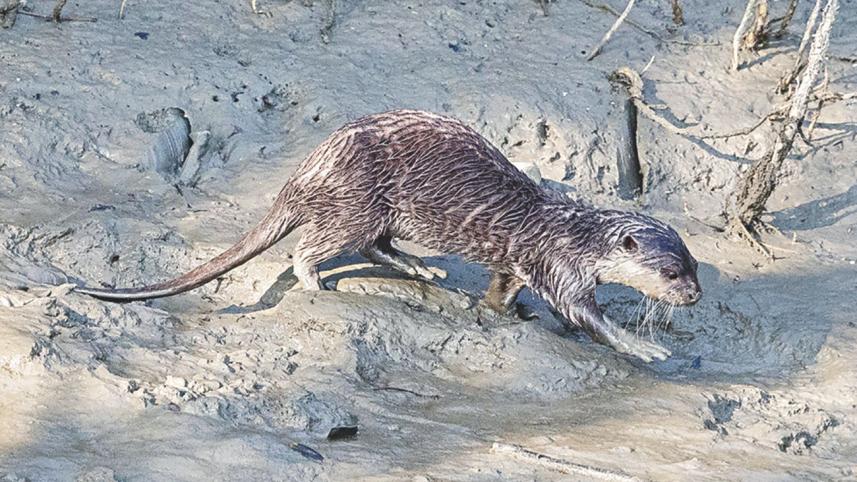Basic Sundarban

Immense, difficult, teeming with life – but we know so little about Sundarban!
Based on a recent trip – when I saw more birds and wildlife than in my six previous trips - I summarized my impressions of Sundarban in the last three Tangents columns. Today I want to share basic facts about the forest.
In Bangladesh, Sundarban Reserve Forest occupies approximately 6000 square kilometres. This is 60% of Sundarban – the world's largest mangrove forest – with the remainder falling in West Bengal. Sundarban is a UNESCO Natural World Heritage Site as well as a Ramsar Site of International Importance, treasured for its uniqueness as well as its variety of life, some unique and unusual.
The soil of Sundarban is silt deposited by numerous rivers and canals flowing into the Bay of Bengal. Its water is saline. Due to deep and sticky mud – not to mention pointed mangrove roots protruding from the soil - it is difficult to traverse the forest by foot and boats are necessary. There is no permanent human habitation inside the forest.
The biodiversity of Sundarban includes over 339 species of birds, 528 species of plants, 35 species of reptiles, 278 varieties of fish and crustaceans, and 42 species of mammals. Many of these species are unique and endangered, including the Masked Finfoot, the River Terrapin and, of course, the Royal Bengal Tiger (of which 106 were counted in the latest official survey.)
That's fine, you might say, but what do these numbers really mean?
At the risk of comparing apples to oranges, let us look at one of the world's premier national parks. Situated in western United States, Yellowstone has 300 species of birds, 1700 species of plants, 6 species of reptiles, 16 species of fish, and 67 mammal species.
So, except for flora, Sundarban is comparable to Yellowstone in biodiversity. Her fewer plants are due to the difficulty plants face in the saline environment; however, compared to other mangroves around the world, Sundarban plant life is still significantly richer.
Incidentally, 240 species of insects have also been reported in Sundarban, though the actual number is surely much higher. Among these is Apis dorsata, a giant honey bee. Compared to the usual honey bees, Sundarban's bees make honey faster but their sting is nastier.
There is evidence of ancient human civilization in Sundarban. Two of the earliest appear to date back to the periods 4000-3000 BC and 1200-400 BC. Even during pre-Mughal times, local kings leased out the forests of Sundarban. Through parts of its human history, salt production was carried out in the coastal areas of Sundarban as evidenced by terracotta salt containers seen in Katka. Other important products include fish, honey, golpata (nypa palm) leaves and timber/firewood.
The tide plays an important role in Sundarban. Flowing in twice a day, it is a force that everything inside the forest must reckon with. As the tide retreats, it exposes the banks of multitudes of rivers, canals and creeks of Sundarban, allowing the birds and wildlife access to food.
Inside Sundarban Reserve Forest are three wildlife sanctuaries: Sundarban East, Sundarban West and Sundarban South. Strict rules are enforced in these areas to protect wildlife: for example, fishing is banned. In June 2017, the President of Bangladesh ordered the expansion of these sanctuaries to more than double their previous area. This increase may be responsible for the richer wildlife that I observed this year.
Sundarban was brought under forest service of British government in 1876. Yellowstone was made a national park in 1872. But while millions of people visit Yellowstone every year, tourists to Bangladesh Sundarban are far fewer.
I leave you with another parting thought about Sundarban vis-a-vis Yellowstone. Sundarban is poorer in one regard. Amazon lists over 5000 books on Yellowstone, and only 134 on Sundarban.
www.facebook.com/ikabirphotographs or follow ihtishamkabir on Instagram



 For all latest news, follow The Daily Star's Google News channel.
For all latest news, follow The Daily Star's Google News channel.
Comments